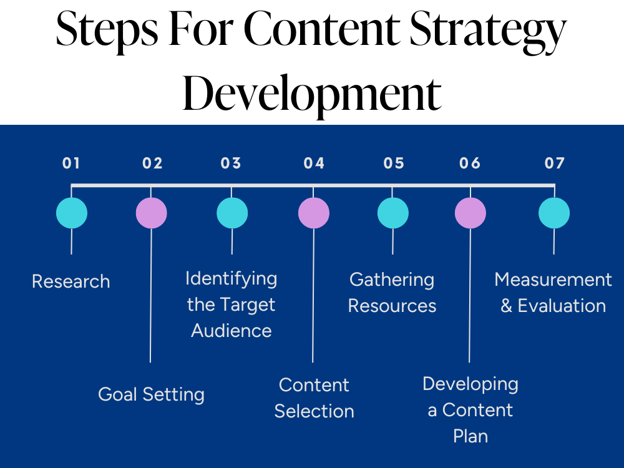
Never miss an important conversation about your brand again
Generate more leads from social media with impressive conversion rates
Connect with top influencers who your customers love
Measure your marketing campaigns with unparalleled precision
Take your customer satisfaction performance to the next level
Deliver top-notch content that generates traffic and sales
Stay ahead of the competition—all the time
Detect and fix problems before they become a pain
Gain access to never-before-seen social media insights for your brand
Never miss an important conversation about your brand again
Generate more leads from social media with impressive conversion rates
Connect with top influencers who your customers love
Measure your marketing campaigns with unparalleled precision
Take your customer satisfaction performance to the next level
Deliver top-notch content that generates traffic and sales
Stay ahead of the competition—all the time
Detect and fix problems before they become a pain
Gain access to never-before-seen social media insights for your brand

Many people use the internet to find solutions to their problems or answers to their questions. Marketers create content strategies to reach potential customers who may benefit from their product or service as a solution to their problems.
Most marketing strategies aim to help the brand reach its target audience. In contrast, content marketing focuses on helping the target audience find the brand that can answer their questions and solve their problems.
This article discusses the concept of a content strategy, the difference between a content strategy and a content plan, and how to develop an effective content strategy that accurately targets the audience.
A content strategy is a comprehensive vision; a high-level plan that guides the content industry toward achieving the brand's goals. It typically includes broad ideas such as increasing brand awareness and attracting potential customers to the brand.
Developing a content strategy involves ensuring that the content produced aligns with the brand's goals. A clear content strategy helps with developing a content plan and measuring the success of the content. The key elements of a content strategy typically include:
The content plan can be considered an executable roadmap that content creators, such as writers, editors, and graphic designers, can follow to achieve the goals set by the content strategy. The content calendar is one of the most prominent elements of the content plan. The content plan typically includes the following elements:
Developing an effective content marketing plan is essential for brands to reduce randomness in the content industry, improve content reach to interested audiences, and achieve their content creation goals. Investing in a well-crafted content strategy with a suitable content plan can lead to the following benefits:
Clear vision and effective planning enable the content creation team to generate better and more precise ideas, thereby enhancing the content's quality and value to the brand's followers, ultimately increasing their appreciation for what the brand has to offer.
Having a clear plan and vision for content creation helps to streamline the process and reduce repetitive tasks, making it easier to identify the necessary resources and minimize costs. This can have a positive impact on the budget allocated to the content industry.
Developing a content strategy provides content creators with a clear image of the target audience and their potential problems, allowing them to craft a message that highlights how the brand's product or service can solve those problems, thus increasing the chances of the content resonating with the audience.
Having a content plan with a structured timeline allows for better control and organization of the content creation process. This ensures that each member of the content team is aware of their assigned tasks and the deadlines by which these tasks need to be completed, which in turn helps to avoid technical issues and delays.
Developing a clear content strategy helps define the objectives that need to be achieved through the content, which facilitates measuring its performance and identifying areas for improvement, ultimately increasing the effectiveness of this process.
During the research phase of developing a content strategy, information about competitors can be gathered, which can help the content team determine the level of competition and how to outperform them. This can also aid in selecting the most suitable type of content for the brand.
The content plan is often regarded as an integral component of the content strategy. To develop a content strategy, these steps should be followed:

Prior to initiating any action, it's crucial to gather information about the market in which the product or service is being marketed. This includes understanding the existing problems, expectations, and average income of potential customers, as well as gaining insight into competitors and alternative solutions available to those customers.
During this stage, information is gathered on the brand's market position, marketing issues, and whether the brand faces challenges with low brand awareness. The information collected during this phase will serve as the foundation upon which any future strategy will be developed.
Establishing clear goals is essential for providing the content creation team with a sense of direction. Goals are typically established based on the brand's market position, with the objective of increasing brand awareness if that's a challenge.
Without clear goals, the content creation team may struggle with inconsistency in developing their content strategy and measuring the effectiveness of their content. This can make it challenging to determine whether the content needs to be improved or modified.
Once the market has been studied and the content objective has been established, a clear understanding of the target audience can be developed. This enables content creators to craft content that effectively addresses the needs and interests of this group, as well as select the most appropriate formats for reaching them.
During this stage, a Customer Persona is created that includes detailed information about the target segment, including age, occupation, average income, challenges, fears, preferences, and other relevant details that enhance the targeting accuracy.
Numerous factors can influence the type of content needed, such as the age of the target segment. For instance, if the target audience comprises millennials, short-length videos tend to be the most appropriate format. As a result, TikTok, YouTube, and Instagram are typically the ideal channels to target this demographic.
Alternatively, if the target audience is older, written posts may be a more effective approach. Selecting the right channels to reach the target audience is crucial in determining the type of content required and may involve combining various formats, such as a social media plan and a plan for articles and written posts.
Once the required content format has been determined, it's important to assess the resources needed to develop an effective content plan. For example, if video content is required, hiring a content creator with expertise in video creation and editing may be necessary, along with a content writer to develop accompanying text, or a graphic designer to create images.
Additionally, investing in keyword extraction tools like Lucidya can help improve the accuracy of targeting with written content. This tool identifies the most trending topics among your followers and potential customers, making content targeting more precise, efficient and cost-effective.
With the appropriate resources and defined objectives, it is feasible to create a content plan that centers around establishing a content calendar and ensuring effective communication channels among the members of the content team. During this phase, content ideas are generated, and the best ones are selected to be transformed into content for the designated platforms. Once the content is created, it is scheduled and published during peak periods.
It is noteworthy that content can be repurposed across various platforms. For instance, Instagram posts can be derived from blog articles, and these articles can be converted into YouTube videos. Therefore, the communication between all members of the content team must be seamless.
It is crucial to monitor the performance of content after it is launched to track the engagement of followers and their sentiments towards the content. This is where Lucidya comes in handy as it assists in achieving this goal. This helps the content creation team to identify the weaknesses in their content, allowing them to improve and fix any issues that need to be addressed.
A content strategy provides clear direction that assists in targeting the audience with maximum accuracy. On the other hand, a content plan assists in organizing and refining the production process. Therefore, developing a clear strategy is crucial to avoid randomness in work and ensure the highest effectiveness of content marketing. Ignoring the development of a strategy can lead to inefficiencies and unfocused efforts that may not yield the desired results.